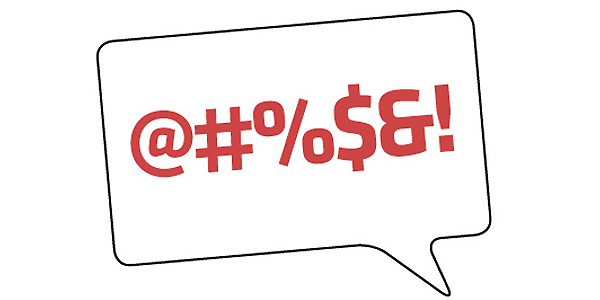Came across this Interesting article on 10 of the Most Quickly Ditched New Year’s Resolutions.
Have you stuck to YOUR New Year Resolutions?
-------------------------------
1-The “Turn My Life Around” Resolution

We’ve all known someone (perhaps it is you) that, at the dawn of the New Year, realizes their life is a tumbling pile of nothingness inhabited by fear, self-loathing and probably a lot of dirty laundry and unwashed dishes. The crushing weight of their failure seems too large to be lifted by a few paltry resolutions, so they resolve to simply overhaul their life. In their mind, the way to act out this goal is simply to act counter to their natural impulses, as these are the impulses that have led him or her to this point in the first place.
“I’m too lazy to do laundry” becomes “Nope, clean everything!”. “I should just keep my head down at work” becomes “I will demand a raise and possibly shit on my boss’s desk after hours!”. The way is so clear, so simple — why didn’t you think of this before?
Why You Will Ditch It:
Scientifically, the best and most successful resolutions are ones that are small and highly specific. This is both huge (“I’m going to change everything”) and incredibly vague (“All of…uhm…those things…”). It’s simply too huge to be attainable, assuming you can even define what “turn my life around” really means. Even for those who set specific goals for this life turn around (“I’m going to smoke less, drink less, spend more time with my family, work harder, keep things cleaner, etc…) is setting up too many goals to achieve, much less remember.
2-Lose Weight

This is probably the most commonly heard resolution around New Year’s. Even relatively thin people wouldn’t mind losing an inch or two around the waist.
It’s an unfortunate consequence of a world where completely sane, heterosexual men have been heard saying they don’t think Christina Hendricks is attractive but would be all over Jennifer Aniston.
Why You Will Ditch It:
If you’re on the husky side of euphemisms for being fat, losing weight actually isn’t that difficult. It’s losing those last few pounds and keeping them off that’s the trouble. Long story short, when you start losing weight (which for most of human history was a terrible thing survival-wise), your body starts freaking out, and your hormones conspire to get that weight back. Not to mention the fact that you’ll likely have to overhaul your diet and start setting aside at least 3-4 hours a week to hit the gym. The point is, you’re not only combating your own laziness that tells you the gym is too much work and microwave dinners for 3 meals is totally okay, you’re battling millions of years of evolution. And you’re doing it with a New Year’s Resolution, which is second only to “The Weather” in the list of half-hearted conversation topics.
3-Stop Smoking

We all have vices that we pretend we’d like to drop but secretly wish we could keep doing for the rest of our lives without consequence. Smoking, along with rampant unprotected sex and black-out drinking, is one of these. Unfortunately, we are all mortal and so every New Year’s we have to pretend to our parents and friends that we’re totally going to quit smoking. Soon. I’m down to only 2-3 a day, really I’m like almost there.
Over the past few years, it’s even gotten harder and harder to be a smoker. Good luck finding anywhere inside to smoke, and if you live in certain areas of the country, good luck smoking at all. When asked if they smoke or how much they smoke, smokers are now required by law to say “Yeah, I really need to quit though it’s terrible.”
Why You Will Ditch It:
To paraphrase Mark Twain: it’s really easy to quit smoking — I’ve done it hundreds of times. If you’re trying to quit smoking, your odds of success are in the single digits. First off, smoking is so incredibly addictive, it’s kind of unbelievable. Nicotine as a drug leads to addiction in close to 70 to 90 percent of regular smokers. Compare that with alcohol, where only 2.7% of regular drinkers report a level of alcohol usage indicative of dependance. In addition, most smokers smoke compulsively: with coffee, with alcohol, after meals, before bed, right after waking up, etc… if you’re quitting smoking, odds are there aren’t many activities in your life that aren’t closely linked to having a cigarette in your hand.
A good smoking cessation plan takes weeks of preparation, and often entails involving friends, family, and support groups in your plan. Resolving to quit on New Year’s just because the calendar has changed a digit isn’t going to cut it.
4-Spend More Time With Friends and Family

Believe it or not, spending more time with those closest to you ranks as one of the more popular New Year’s Resolutions. Let’s pretend for a moment that we’re not all shriveled, misanthropic husks of cynicism and give this idea some credence. It’s a well-studied fact that people derive some of the deepest and longest-lasting joy in life from having a strong and supportive network of friends and family members. So it’s understandable that people who feel that these things are lacking in their lives would seek them out.
Why You Will Ditch It:
First off, this goal falls into the trap of so many resolutions in that it sounds simple and straight forward, but is actually maddeningly vague. How much time is enough? Is some time more valuable than other times? Is spending time playing catch with my son the equivalent of taking him to Disneyland? Should I spend more time with my family or my friends? A simple way to fix this would be to set aside some time every week to spend with friends and family, say sitting down to dinner every night and setting a weekly bowling date with buddies.
While nice, this doesn’t address the second, more serious reason why this resolution gets ditched: if you feel like you’re not spending enough time with your family and friends, there’s likely something else, good or bad, that keeps you from doing this. Maybe you’re a workaholic, in which case your resolution should focus on not devoting so much time to work (though that might be impossible if you want to keep your job). Maybe you’re estranged from your family because your parents were abusive and they engendered a lack of an ability to trust that has prevented you from forming meaningful relationships. In this case your resolution should be to see a therapist. Or maybe you’re just an insufferable asshole and few people can put up with you for extended periods of time. In this case your resolution should be to go into the financial industry so you can buy friends.
5-Get In Shape

The “lose weight” for people who aren’t fat or don’t want to admit that they’re fat, the “get in shape” resolution usually comes after a fit of wheezing and gulping breaths after climbing a flight of stairs. It’s usually followed by phrases such as “tone up”, “cardio”, “core strength training” and “protein shake”. This wonderfully meaningless phrase is basically a way for people who aren’t visibly out of shape to commiserate with those who are. It is the “oh my god I’m so fat” for people who aren’t women who watch too much TV.
Why You Will Ditch It:
For all the same reasons that it’s difficult to get your ass off the couch and lose weight, it’s difficult to get in shape. You won’t have the same sort of hormonal diet-rage as people who just dropped 30 pounds, but you still have to set an exercise regimen, and keep to it consistently for the rest of your life. Thick or thin, waking up at 5am to get a three mile run in before work while abstaining from harmful drugs sounds appealing to precisely no one and Mormons.
But the worst part, and the reason this resolution is probably dropped more quickly and frequently than losing weight is there’s nothing obviously wrong to begin with. If you’re a healthy weight, don’t smoke and drink in moderation, no one is going to give you shit about being unable to run three miles in less than 30 minutes. If you wake up every morning, look in the mirror and are able to honestly say “meh, good enough” all motivation to improve upon that goes out the window. Though to be fair, if you’re able to do that, your low-stress life will probably have you living longer than a marathoner.
6-Enjoy Life More

This is another resolution that shows up with remarkable frequency in polls of people’s goals for the year. When asked to elaborate, “take it easy” was the winner, showing up in 86% of replies. “Smell the roses” was a close second with 73% of replies with third place going to “You know, just live, maaaannnn”. When asked what specific activities ‘Enjoying Life More’ would entail, there were widespread reports of listening to the Grateful Dead and using this resolution as an excuse to drink more.
Why You Will Ditch It:
This resolution falls into the awful trifecta of New Year’s Resolutions: It’s vague, difficult to know when you’ve achieved and the result of so many factors that are nearly impossible to address all at once. How can you tell if you’re enjoying life more? Do you keep a daily chart of how often you’ve sniffed some
angiosperms?
On top of all this, there’s usually a reason you feel like you’re not enjoying life and it likely doesn’t have much to do with how easy you take it or how often you take long, thoughtful walks through the woods and admire the foliage. Odds are if you don’t have much time to enjoy life, it’s because you’re committed to a career or something else that sucks your time. Losing that thing in order to “enjoy life” more thoroughly will likely be catastrophic for your finances and responsibilities. Similarly, if you’re not strapped for time but find yourself unable to enjoy life despite a lack of an obvious antagonizing factor, you should probably see a therapist as that’s a classic symptom of depression that isn’t going to be fixed by a simple resolve to feel better about life in some abstract sense.
7-Cut Back on/Quit Drinking

Almost everyone has been hungover at work or during classes, sometimes more than once a week. While this increases in frequency the younger you are, odds are just about everyone reading this now would like to cut back on drinking a bit, at the very least. Some of you reading this right now should probably quit drinking altogether. On top of the long-term damage it can do to your body in the form of increased cancer risks and liver scarring, most of us are just sick of the hazy feeling that comes from a night of even moderate drinking.
Why You Will Ditch It:
Alcohol will still be everywhere around you. You never quite realize until you try to quit or cut back just how many of your activities and friendships revolved around at least some drinking. Unless you spend a lot of time drinking alone, odds are most of your drinking isn’t a compulsive need, but simply a desperate attempt to make your friends more interesting. Even the most casual of drinkers is still surrounded by a world where every get together that takes place after 7pm and isn’t Bible Study usually involves a few rounds.
If you’re a heavy drinker and trying to cut back or quit, the story gets even scarier. Have a look at this list of symptoms for the condition known as Delirium Tremens. Long story short, a heavy drinker can expect some pretty severe withdrawal symptoms from insomnia, irregular heartbeat and motherfucking seizures. You don’t even have to be a heavy drinker, as these symptoms have shown up in patients who drank as little as 20 drinks a week (still a lot but well within a college student’s weekend).
So even if you muster the willpower to reign in your drinking, you are going to be surrounded by it for what is likely to be the rest of your life, assuming you don’t die from withdrawal. I give you until Valentine’s Day.
8-Get Out of Debt

In this hip, new second decade of the 21st century, many people are responding to the latest economic fashion trends and resolving to join those cool kids without any debt. Unsurprisingly, this resolution has become increasingly common in a world where millions of mortgages sit underwater and middle-class wages have stagnated.
As far as resolutions go, getting out of debt is mercifully specific and entails a definite end-goal which is theoretically feasible given the proper steps. On top of that, losing your debt is a great way to up your credit score, increase your long-term savings and earnings potentials and the sooner you do it the less money you’ll pay overall. Especially if your debt is on your credit card.
Why You Will Ditch It:
Unlike enjoying life, losing weight, spending time with friends and family and pretty much every other resolution, getting out of debt costs a hell of a lot of money. If you don’t have a lot of disposable income (and if you do, why are you in debt in the first place?), eliminating your debt is going to entail a lot of sacrifices. You have to make a budget and stick to it. Every day of every week of every year for what is going to likely be at least three to five years. And, much like drinking, all around you your friends will continue to buy nice things, eat out frequently and buy cars, houses, and wedding rings, whether they can afford them or not. And that entire time (again, especially if your debt is on credit cards) you will see your principle shrink by very tiny amounts as you pay off the astronomical interest.
Add to all this the sudden, unexpected expense that will inevitably arise and wipe out 6 months of good finances, and you’re likely to go back to making minimum payments before Martin Luther King Day.
9-Get More Sleep

As far as general things that you can do to improve your health, getting enough sleep comes in near the top of the list (assuming you’re keeping your resolution to quit smoking). And in this crazy, fast-paced world where we’re pressured to lose weight, enjoy life, spend more time with friends and family, and balance our checkbooks, sleep is often the only area we can afford to cut time out of. So come New Years, many people resolve to make sleep a priority in an effort to increase health and decrease stress.
Why You Will Ditch It:
When faced with two hours of sleep versus finishing a project that is due tomorrow, no one responsible will choose sleep. As detrimental as long-term sleep deprivation may be to your health, a little bit of grogginess is a small price to pay to get something important done. And good luck telling your boss/teacher/professor you didn’t finish the assignment because you are making sleep a priority this year. Getting that extra 40 winks is viewed as a sign of laziness and lack of ambition.
The big problem here for someone making this resolution isn’t that they aren’t getting enough sleep, it’s that they have too many other things going on in their life that are more important to them than sleep. The reason this resolution will get ditched almost immediately is it’s attacking the problem from the wrong angle. It’s like saying “I need to spend more time not smoking” instead of “I need to quit smoking”. It’s a semantic play that allows people to resolve to do something they think is important, without recognizing that they’ll likely have to give up something else that is important to them in order to achieve this goal.
10-Spend Less Time Doing (Wasteful Activity)

We all have our fair-share of time wasters. For some people, it’s watching a 4 hour long Mythbusters or General Hospital marathon. For others it’s playing video games, or looking at cat pictures on the internet. These activities don’t even have to interfere with work, school or other obligations (though they often do). Most of us still feel a twinge of guilt when we sit on our asses not accomplishing anything for several hours—we could have been painting, or learning a new skill, or reconnecting with old friends or…crocheting…or…ok I don’t honestly know what do people do outside of browsing the internet for funny pictures.
The point is, we all waste time, and we could be building a spaceship in our back yards (this is what I imagine I would have the time to do without video games).
Why You Will Ditch It:
You enjoy it too much, and there aren’t many negative consequences. Come on this is America, not some utopia of productivity and conscientiousness. If I want to sit on my couch for 6 hours and watch all three Star Wars movies back to back, not only will nobody dare criticize me, most people will join in and afterward we will say things like “That was awesome let’s do the Lord of the Rings next weekend!”.
You may feel like you’re wasting your life and not being productive enough, but the truth is Americans are the most overworked citizens in the developed world. Odds are you have already paid your dues during the work week, and even likely fielded several annoying calls on Saturday from your boss. You’ve likely paid your dues, and a part of you already knows it. This will probably be the quickest resolution to get ditched, simply because it doesn’t have a really good motivation behind it, unlike quitting smoking or getting in shape. Unless you’re an unemployed, lazy slob, you’re likely just being mean to yourself for no reason.
And so when the guilty part of your resolves to spend less time playing video games, the rest of your body screams “AW HELL NAW”, and sits your ass right back in front of that TV to participate in what is likely the most relaxing, gratifying and enjoyable thing you can easily do on a weekend..
http://www.businesspundit.com/10-of-the-most-quickly-ditched-new-years-resolutions/












































